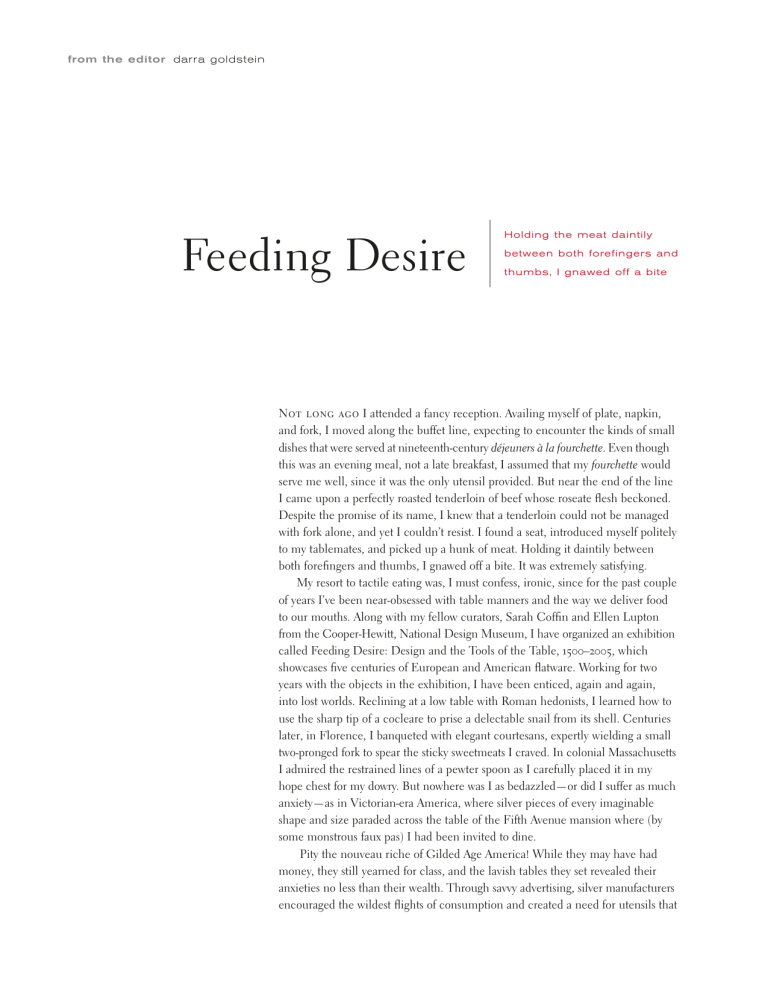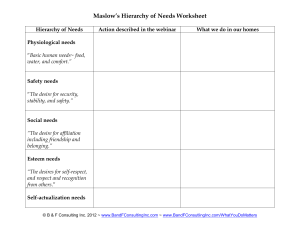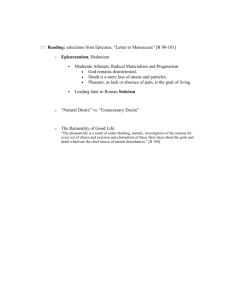
from the editor darra goldstein Feeding Desire Holding the meat daintily between both forefingers and thumbs, I gnawed off a bite Not long ago I attended a fancy reception. Availing myself of plate, napkin, and fork, I moved along the buffet line, expecting to encounter the kinds of small dishes that were served at nineteenth-century déjeuners à la fourchette. Even though this was an evening meal, not a late breakfast, I assumed that my fourchette would serve me well, since it was the only utensil provided. But near the end of the line I came upon a perfectly roasted tenderloin of beef whose roseate flesh beckoned. Despite the promise of its name, I knew that a tenderloin could not be managed with fork alone, and yet I couldn’t resist. I found a seat, introduced myself politely to my tablemates, and picked up a hunk of meat. Holding it daintily between both forefingers and thumbs, I gnawed off a bite. It was extremely satisfying. My resort to tactile eating was, I must confess, ironic, since for the past couple of years I’ve been near-obsessed with table manners and the way we deliver food to our mouths. Along with my fellow curators, Sarah Coffin and Ellen Lupton from the Cooper-Hewitt, National Design Museum, I have organized an exhibition called Feeding Desire: Design and the Tools of the Table, 1500–2005, which showcases five centuries of European and American flatware. Working for two years with the objects in the exhibition, I have been enticed, again and again, into lost worlds. Reclining at a low table with Roman hedonists, I learned how to use the sharp tip of a cocleare to prise a delectable snail from its shell. Centuries later, in Florence, I banqueted with elegant courtesans, expertly wielding a small two-pronged fork to spear the sticky sweetmeats I craved. In colonial Massachusetts I admired the restrained lines of a pewter spoon as I carefully placed it in my hope chest for my dowry. But nowhere was I as bedazzled—or did I suffer as much anxiety—as in Victorian-era America, where silver pieces of every imaginable shape and size paraded across the table of the Fifth Avenue mansion where (by some monstrous faux pas) I had been invited to dine. Pity the nouveau riche of Gilded Age America! While they may have had money, they still yearned for class, and the lavish tables they set revealed their anxieties no less than their wealth. Through savvy advertising, silver manufacturers encouraged the wildest flights of consumption and created a need for utensils that It’s a pleasure to take an artfully crafted implement in hand and reflect on the age-old human desire for prestige and power, for had only limited utility. Now extinct from our tables are the Saratoga chip servers, the special fried chicken tongs, aspic slices, ice cream hatchets, cucumber servers, oyster ladles, sardine spades, terrapin soup spoons, chowder spoons, pickle forks, bon bon scoops, chow chow servers, and toddy ladles that were once considered de rigueur. So excessive did the number of pieces become that in 1925 Herbert Hoover, then secretary of commerce, felt compelled to step in. He decreed that American silver services could contain no more than fifty-five pieces. And within a few years Emily Post, that great arbiter of etiquette, declared that the choice of which fork to use at a meal was not really of earth-shattering significance. But Americans don’t easily shed social anxiety. Just look at the increasing number of courses on table etiquette currently being marketed to business executives across the country. And yet, Americans are simultaneously staging a revolt against cumbersome utensils by increasingly seeking out foods we can eat with our hands. Nevertheless, from time to time it’s a pleasure to take an artfully crafted implement in hand, one that has the proper weight and balance, and reflect on the age-old human desire for prestige and power, for connoisseurship and delight. Please come visit Feeding Desire and see how the tools of the table have, throughout history, shaped and expressed the universal ritual of eating. For more information, go to www.cooperhewitt.org/EXHIBITIONS /feeding_desire/index.asp.g berry spoon; made by c. v. gibert; retailed by f. nicoud; paris, france, ca. 1890; silver. cooper-hewitt, national design museum, smithsonian institution. museum purchase from smithsonian institution collections acquisition program, decorative arts association acquisition, and sarah cooper-hewitt funds, 1996-56-42. photo: charles schiller. connoisseurship and delight.



